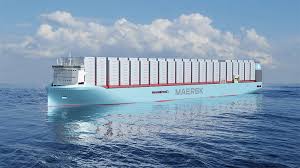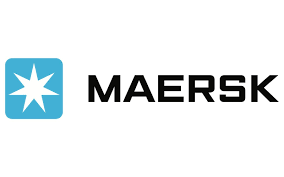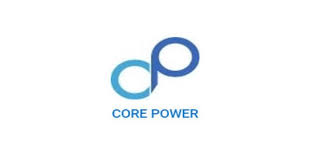〆Maersk, Denmark’s largest shipping company, has expressed its participation in research and development efforts for nuclear-powered container ships.
Maersk (A.P. Møller – Mærsk A/S) will collaborate with Lloyd’s Register of the UK and CORE POWER, a British-based company, to conduct a joint regulatory assessment. This study aims to determine the safety and regulatory considerations for next-generation nuclear-powered feeder container ships operating in European ports.
CORE POWER and Lloyd’s Register announced the launch of this regulatory assessment by the 15th of the month. Maersk, through a statement, confirmed the involvement of Ole Graa Jakobsen, Head of Fleet Technology at A.P. Moller-Maersk, in this research project.
(Text by Hiro Yamamoto)
Photo courtesy=Maersk, Lloyd’s Register, CORE POWER

■Energy Transition”
The joint study will deepen the understanding of the operational and regulatory requirements necessary for applying nuclear power to container ships, as well as investigate the requirements of the latest safety regulations. The study is set to commence this September and will continue for 12 months.
Ole Graa Jakobsen explained the significance of Maersk’s involvement in researching nuclear propulsion:
“Since Maersk initiated its energy transition strategy in 2018, we have consistently explored various low-emission energy options for our assets (ships). Nuclear power presents several challenges, including safety, waste management, and regulatory acceptance across different regions. So far, the drawbacks have clearly outweighed the advantages of the technology.

“However, if these challenges can be addressed through the development of new so-called fourth-generation reactor designs, nuclear power could mature as another decarbonisation option for the logistics industry within 10 to 15 years. Therefore, Maersk intends to continue monitoring and evaluating this (nuclear propulsion) technology, along with all other low-emission solutions.”
CORE POWER, a UK-based maritime nuclear propulsion development company, last year unveiled a concept design for a 2,800 TEU nuclear-powered boxship using a molten salt reactor.
Core Power Unveils Molten Salt Reactor Potential to Revolutionize Container Shipping

At a customer event last September, Core Power revealed why its molten salt reactor technology could revolutionize container shipping.
Core Power’s CEO, Mikal Bøe, he posted on an article of Splash247 to his LinkedIn as follows. “The new generation of nuclear-powered ships marks the end of slow steaming,” said “Since 2008, large vessels have trended towards slow steaming, resulting in less flexible services.”
■24,000 TEU-Class Mode
According to Core Power’s model, transatlantic transit times could be reduced from 10.2 days to 6.5 days, increasing annual round trips from 28 to 41. A design for a nuclear-powered, ultra-large Megamax container ship was a highlight at last year’s Marintec China exhibition in Shanghai, drawing significant attention.
During the event, Jiangnan Shipyard, a state-owned entity, unveiled a design for a 24,000 TEU vessel incorporating molten salt reactor technology. Jiangnan’s parent company, China State Shipbuilding Corporation (CSSC), stated in a social media post that “this ultra-large nuclear-powered container ship is designed to genuinely achieve zero emissions during its operational cycle.”

Chinese shipyards are already moving ahead with designs for large container ships predicated on nuclear propulsion.
Regarding nuclear energy, Singapore, the world’s largest major port, also took a significant step in July by signing the “123 Agreement,” a key civil nuclear cooperation agreement with the United States, aimed at strengthening bilateral relations and advancing clean energy goals.
Nuclear propulsion has taken a further step forward with a joint study conducted by Maersk, Lloyd’s Register, and Core Power.
〆デンマーク最大の海運会社マースク(Maersk)が、原子力コンテナ船の開発研究に参加する。
マースクは(A. P. Møller – Mærsk A/S、short for Maersk)、英国のロイド船級協会(Lloyd’s Register、コア・パワー(CORE POWER、本社・英国)の3社で、ヨーロッパの港で貨物輸送を行う次世代原子力推進フィーダーコンテナ船の安全性と規制上の考慮事項を決定するための規制評価研究(Joint regulatory assessment)を行う。コア・パワー、LRが15日までに規制評価研究の開始について発表、マースクもその発表文の中でA.P.モラー・マースク社のフリートテクノロジー部門責任者であるオレ・グラ・ヤコブセン(Ole Graa Jakobsen, Head of Fleet Technology, A.P. Moller)が同研究に参加する意向を示した。
(Text by Hiro Yamamoto)
■エネルギー転換
この共同研究では、コンテナ船への原子力発電の適用に必要な運用と規制に関する理解を深めるとともに、最新の安全規則の要件を調査する。この共同調査は今年の9月から開始され、12か月間続けられる予定である。
オレ・グラ・ヤコブセンは今回、マースクが原子力推進機関の研究する意義について次のように説明する。
「マースクが2018年にエネルギー転換戦略を開始して以来、私たちは資産(船舶)に対して様々な低排出エネルギーの選択肢を継続的に探ってきた。原子力には、安全性、廃棄物管理、地域ごとの規制の受け入れなど、いくつかの課題が存在し、これまでのところ、技術の利点よりも明らかに欠点が上回っていた」
「もしこれらの課題が、いわゆる第4世代の新しい原子炉設計の開発によって解決されるなら、原子力は10年から15年後に物流業界における別の脱炭素化の選択肢として成熟する可能性がある。そのためにMaerskは他のすべての低排出ソリューションとともに、この(原子力推進機関の)技術の監視と評価を続けていく方針だ」
英国を拠点とする海洋原子推進力開発企業のコア・パワー社は、昨年、溶融塩原子炉を使用した2,800TEUの原子力ボックスシップのコンセプト・デザインを発表した。
昨年9月の顧客向けイベントで、コア・パワーは、同社の溶融塩炉がコンテナ輸送に革命をもたらす可能性がある理由を明らかにした。
「新しい原子力船は、減速航行の終焉を告げるものだ。 「2008年以来、低速で航行する大型船がトレンドとなっており、柔軟性に欠けるサービスとなっている。
コア・パワーのCEOであるミカル・ボエ(Mikal Bøe)がLinkedInに投稿したSplash247の記事は次のように述べている。
■2万4000TEU型モデル
コア・パワーのモデルによれば、大西洋横断航路のトランジットタイムは10.2日から6.5日に短縮され、年間往復航路は28航路から41航路に増加する。
昨年上海で開催されたマリンテック・チャイナの展示会で注目を集めたのは、原子力搭載の巨大メガマックスコンテナ船の設計だった。
そこで国営江南造船所(Jiangnan Shipyard)は、溶融塩炉技術を取り入れた24,000TEUの船の設計を発表した。
同造船所の親会社である中国国営造船集団公司(CSSC)は、ソーシャルメディアへの投稿の中で、「この超大型原子力コンテナ船は、運航サイクル中に排出ガスゼロを真に達成するよう設計されている」と述べた。
中国造船所は既に原子力推進機関の搭載を前提にした大型コンテナ船の設計に取り掛かっている。
原子力エネルギーについては、世界最大の主要港であるシンガポールも7月、米国と二国間関係の強化とクリーンエネルギー目標の推進に向けた重要な一歩として、「123協定」”123 Agreement”として知られる重要な民間用の核協力協定を締結した。
原子力推進エネルギーは、今回のマースク、ロイズ・レジスター、コアパワー3社の共同研究でさらに一歩前進する。
